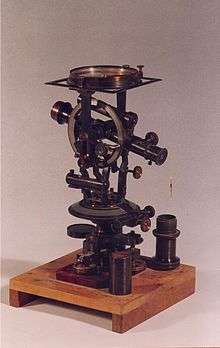Gottlieb Schumacher

Gottlieb Schumacher (21 November 1857 – 26 November 1925) was an American civil engineer, architect and archaeologist who was an important figure in the early archaeological explorations of Palestine. He was of German descent.
Schumacher was born in Zanesville, Ohio, where his parents had immigrated from Tübingen, Germany. His father Jacob Schumacher was a member of the Temple Society, a German Protestant sect which in the 1860s established a colony in Haifa, Palestine. In 1869, Jacob Schumacher settled with his family in the Templer colony, where he became the chief architect and builder.
Gottlieb studied engineering in Germany, and then returned to Palestine in 1881.
He quickly became a leading figure in the construction of roads and houses. He was appointed Chief Engineer for the Province of Akko by the Ottoman government. Among his many works were the Scottish hostels in Safed and Tiberias, the Russian hostel in Nazareth, the cellars of the Rothschild winery at Rishon LeZion, and the bridge over the Kishon River.
One of his most important projects was the survey of the Golan, Hauran, and Ajlun districts, in preparation for the construction of the Damascus-Haifa railway, which branched off from the Hejaz railway at Deraa. As part of the same development he also extended the mole of the port of Haifa. In the course of this survey he produced the first accurate maps of these regions, along with detailed descriptions of the archaeological remains and the contemporary villages.
From 1886 he published articles reporting his discoveries in the Zeitschrift des Deutschen Palästina-Vereins. These articles were reprinted in translation by the Palestine Exploration Fund Quarterly Statement. He published a series of books, also reprinted in English by the Fund. From 1903 to 1905 Schumacher carried out excavations at Tell el-Mutesellim, the mound containing the ruins of the ancient city of Megiddo. The first volume of his report on Megiddo, covering the stratigraphy and the architecture, was published in 1908. The second volume, a study of the small finds, was published in 1929 by Carl Watzinger. Among his discoveries was the ancient synagogue at Khirbet Dikke.
His approach to excavation was, like most of his contemporaries, based on the careful clearance of architectural horizons, rather than the dissection of layers of earth. However, by the standards of the day the work was carefully recorded. His report is illustrated with a wealth of photographs of the excavated areas. It also includes simple but beautifully drawn sections, both a main section across the site from north to south and smaller ones to illustrate detailed stratigraphic points.
His main excavated area at Megiddo was a trench 20–25 metres (66–82 ft) across, running north-south through the center of the mound, a method widely used in those days at the typically large sites of Mesopotamia, but considered unfortunate in this case by later archaeologist due to the very large amount of soil removed in a manner that would offer relatively little information to future scholars and excavators. The massive intervention in this rather small tell led for instance to overlooking the potentially very important stele fragment of Pharaoh Sheshonk I, which was later found in the pile of dump created by Schumacher's trench, thus out of its original stratigraphic context and rendered useless for dating purposes. If found in situ, the stele would have provided excellent evidence for or against the existence of a large city from the time of King Solomon, which is disputed by some along with the entire biblical narrative about David and Solomon.
In the trench Schumacher identified eight strata, which he numbered from bottom to top. Most of them may be dated, by the pottery found in them, to the Middle Bronze Age II-Iron Age II periods. His work was the basis for later excavations by the Oriental Institute of the University of Chicago in 1925-1939.
Schumacher uncovered a number of important buildings at Megiddo.
- Part of the Early Bronze Age palace later fully uncovered in Stratum XII of the Chicago excavations.
- An Iron Age IIA palace on the south side of the tell (called building 1723 by the Chicago excavators), from which he recovered a seal with a beautifully depicted lion and the words "Shema servant of Jeroboam".
- Corbel vaulted tombs with no parallels in the southern Levant, in Stratum IV.
With the outbreak of World War I, some members of the Templer community returned to Germany. Schumacher remained there until 1924, when he returned to his home on Mount Carmel near Haifa, where he died in 1925.
References
"Gottlieb Schumacher". Palestine Exploration Fund. Retrieved 2014-10-13.
Bibliography
- Schumacher, Gottlieb (1888): The Jaulân: surveyed for the German Society for the Exploration of the Holy Land
- Schumacher, Gottlieb; Oliphant, Laurence, 1829-1888; Le Strange, G. (Guy), 1854-1933 (1889): Across the Jordan; being an exploration and survey of part of Hauran and Jaulan
- Schumacher, Gottlieb; Watzinger, Carl, 1877-1948, (1908): Tell el Mutesellim; Bericht über die 1903 bis 1905 mit Unterstützung SR. Majestät des deutschen Kaisers und der Deutschen Orientgesellschaft vom deutschen Verein zur Erforschung Palästinas Veranstalteten Ausgrabungen Volume: 1
- English translation, by Mario Martin
- Schumacher, Gottlieb; Watzinger, Carl, 1877-1948, (1929): Tell el Mutesellim; Bericht über die 1903 bis 1905 mit Unterstützung SR. Majestät des deutschen Kaisers und der Deutschen Orientgesellschaft vom deutschen Verein zur Erforschung Palästinas Veranstalteten Ausgrabungen Volume: 2